I have visited the Rotunda at the National Archives many times. On permanent display are the Declaration of Independence, the four pages of the Constitution, and the Bill of Rights. At this point, the Declaration is so faded, it is nearly impossible to read. Same for the Bill of Rights. Thankfully, the Constitution was better preserved. Every time I walk into the room, I am overcome by a sense of awe and wonder. I devote my life to teaching these documents, but it is a very different sensation to see them in person.
For the next month, the National Archives has put together a very special presentation: the “fifth page” of the Constitution is on display, along with all twenty-seven amendments. Today, I visited the Archives, and thoroughly enjoyed the new exhibit. The photographs, alas, are not good. The lighting creates a glare on the glass cases, which made them even more difficult to see.
The “fifth page” provided instructions to the states of how to ratify the Constitution. I labored about whether to include this text in the Heritage Guide to the Constitution. I ultimately decided not to, as it was not part of the ratified document, even though it was signed by George Washington, the President of the Convention.
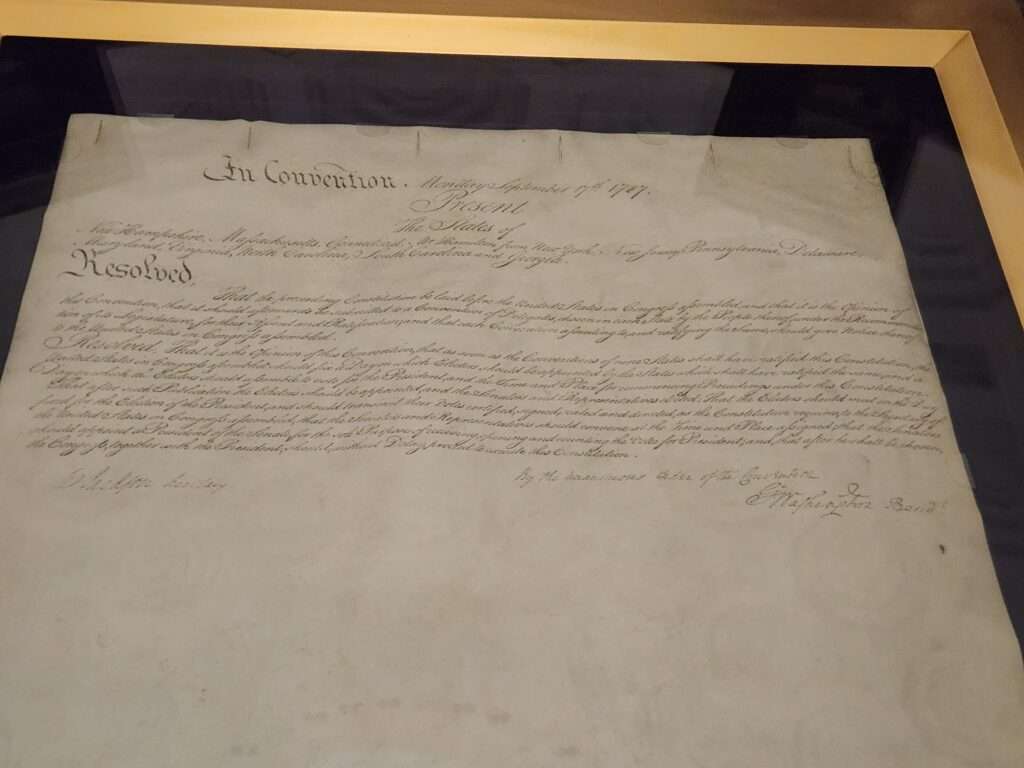
I was struck by how large the proposed Eleventh Amendment was. The piece of parchment was nearly the size of the Bill of Rights.
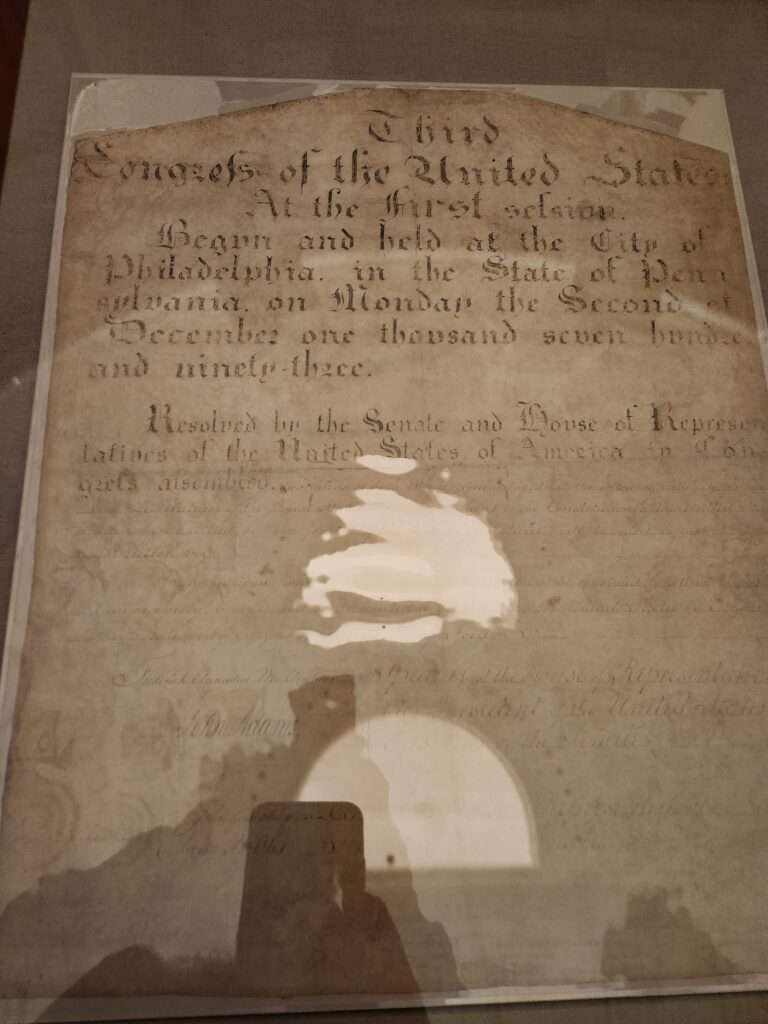
The Twelfth Amendment had a formatted, printed header at the top. It was also a large piece of parchment.
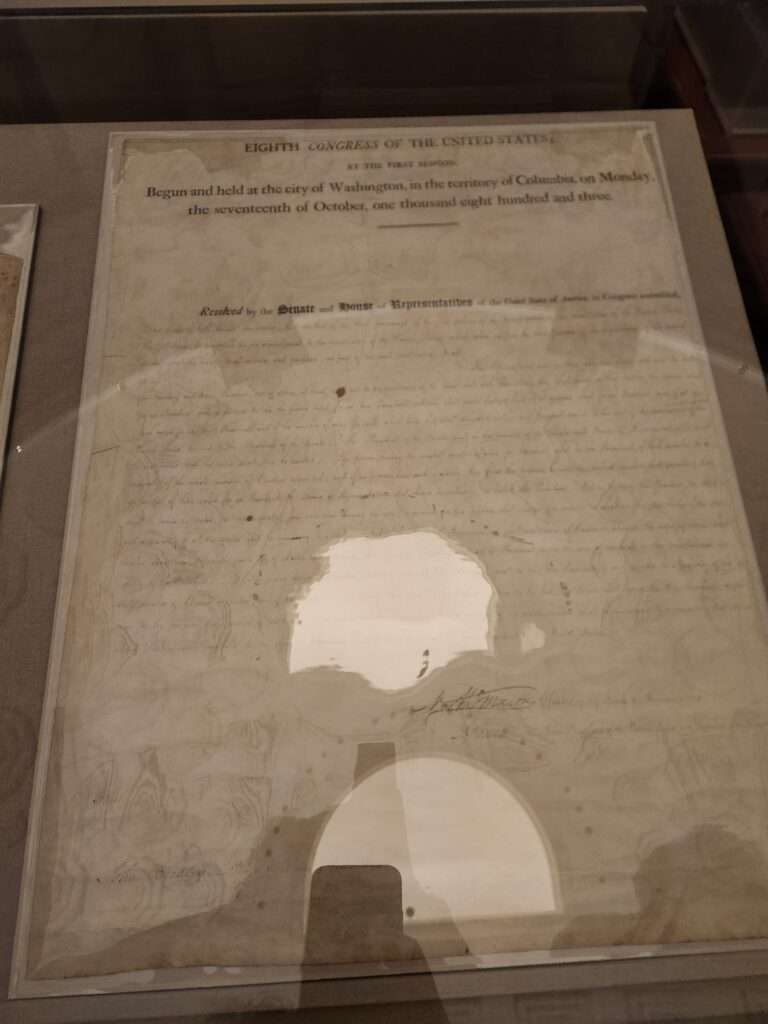
The Thirteenth Amendment was written in very tight cursive, and took up barely half the page. It is noteworthy that President Lincoln signed the Thirteenth Amendment, even though Article V does not provide a role for the President in the amendment process.

The Fourteenth Amendment was not written on any sort of form, but was written in script on lined-paper.
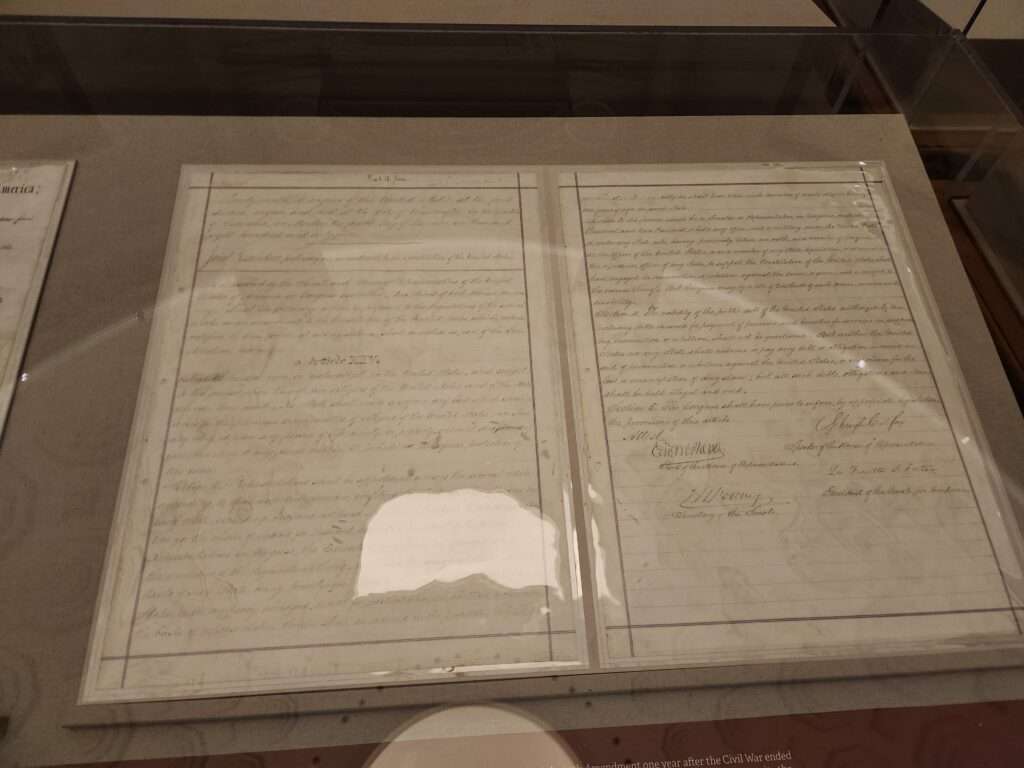
The Sixteenth Amendment was the first amendment that was typeset. Much less dramatic.
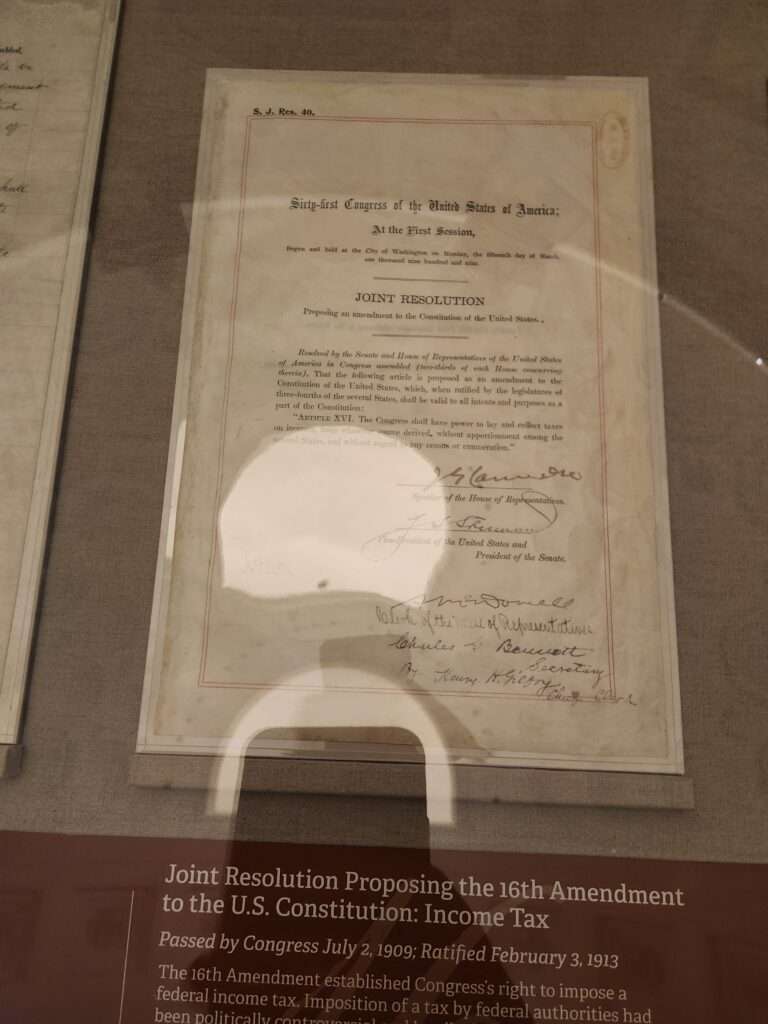
I don’t think I had ever seen the Twenty-Seventh Amendment before. It includes a fascinating narrative of how the amendment was originally introduced in 1789, but not ratified until 1992. 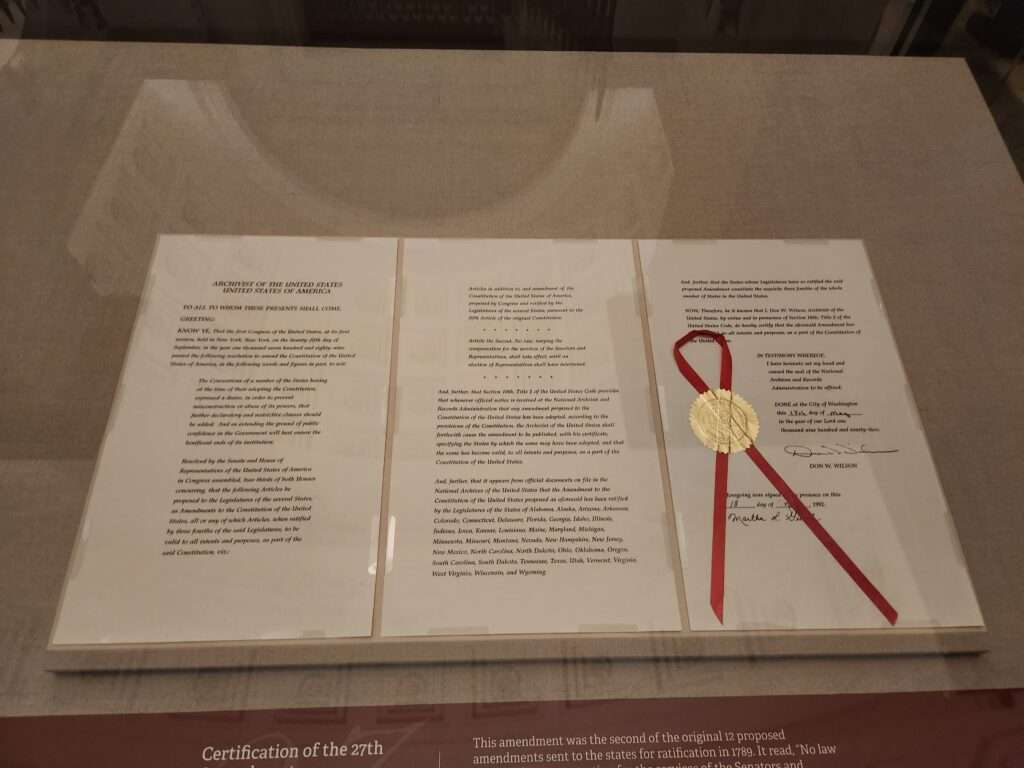
Visit the Archives soon!















